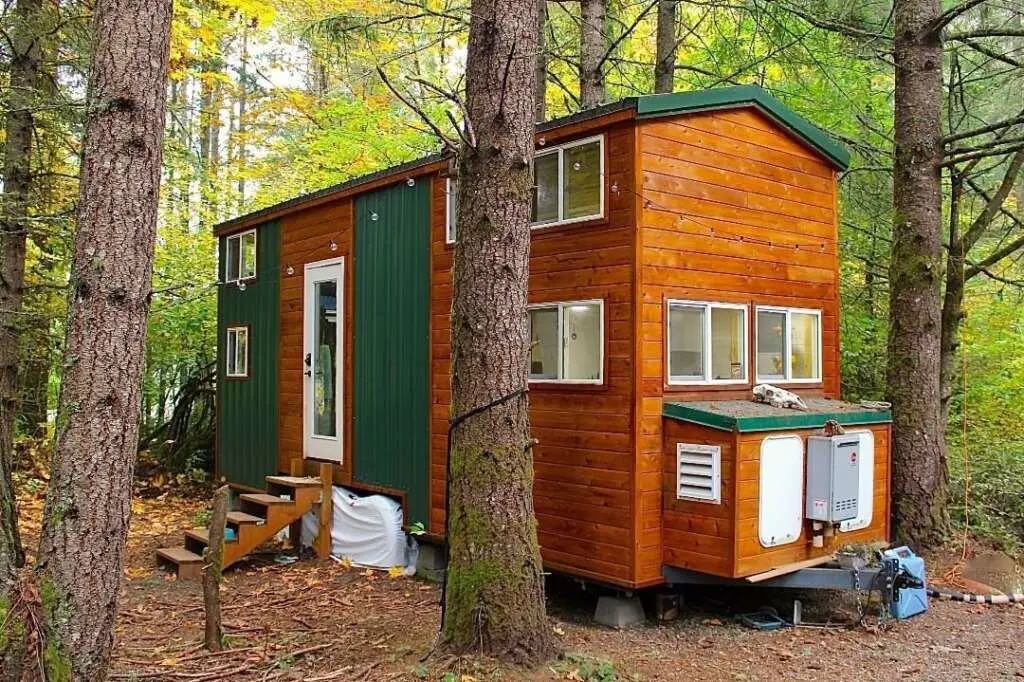Living in a small space like a tiny home may seem appealing, but have you ever wondered how these compact dwellings handle waste? From sewage to garbage disposal, tiny homes have ingeniously adapted to make the most out of limited space while minimizing their environmental impact. In this article, we will explore the creative solutions of waste management in tiny homes, revealing the innovative ways in which these pint-sized residences tackle the not-so-glamorous aspect of everyday living.
Composting Toilets
How do composting toilets work?
Composting toilets are a popular waste management solution in tiny homes due to their efficiency and eco-friendly nature. These toilets function by utilizing the natural process of decomposition to transform human waste into nutrient-rich compost. Unlike traditional flush toilets that rely on water to transport waste, composting toilets separate liquid and solid waste.
In a composting toilet, the solid waste is broken down through aerobic decomposition. This process occurs due to the presence of microorganisms, such as bacteria and fungi, which thrive in oxygen-rich environments. These microorganisms break down the waste into organic matter, resulting in the formation of compost. The liquid waste, known as “greywater,” is diverted to a separate collection system or utilized for other purposes, such as irrigation.
Toilet users usually add organic materials, such as sawdust or coconut coir, to absorb moisture and facilitate the composting process. The composting chamber of a composting toilet is designed to promote air circulation and proper moisture levels, enhancing the decomposition process. This facilitates the breakdown of waste and minimizes odors.
Once the composting process is complete, the resulting compost can be safely removed and used as fertilizer for non-edible plants or disposed of in an environmentally responsible manner. Composting toilets provide a sustainable waste management solution for tiny homes, eliminating the need for water-intensive flushing systems and reducing strain on sewage and water treatment systems.

Benefits of composting toilets
Composting toilets offer numerous benefits for tiny homes, making them a popular waste management choice in this housing trend. Some of the key advantages include:
-
Water conservation: Composting toilets reduce the need for water consumption, as they do not require flushing. This is especially beneficial for tiny homes that may not have access to water hookups or have limited water storage capacity. By conserving water, composting toilets support sustainable living practices and reduce the environmental impact of waste management.
-
Energy efficiency: Composting toilets operate without the need for electricity or plumbing connections. This makes them highly energy-efficient, contributing to a reduced carbon footprint for tiny homes. Additionally, the absence of water-related infrastructure reduces energy consumption associated with water treatment and transportation.
-
Cost-effectiveness: Composting toilets can lead to significant cost savings for tiny homeowners. With no water usage or sewage fees, the ongoing operational costs are minimal. Additionally, the nutrient-rich compost produced can be used in gardening or landscaping, reducing the need to purchase fertilizers or soil amendments.
-
Flexibility and mobility: Tiny homes are often designed to be mobile or located in remote areas. Composting toilets provide a flexible waste management solution that can be easily adapted to different locations without the need for cumbersome sewage systems. This mobility is particularly advantageous for those who enjoy off-grid living or frequently move their tiny homes.
-
Environmental sustainability: Composting toilets promote sustainability by minimizing the environmental impact of waste disposal. They eliminate the need for traditional sewage infrastructure, reducing strain on water treatment facilities and minimizing pollution of water bodies. Furthermore, the compost produced can enrich the soil and support organic gardening practices, contributing to a healthier ecosystem.

Types of composting toilets
There are several types of composting toilets available for tiny homes, each with its own design and functionality. The two main categories are self-contained and central composting toilets.
-
Self-contained composting toilets: These toilets are compact, stand-alone units that combine the composting chamber and the toilet bowl. They are usually designed for individual use or small households and are easy to install and maintain. Self-contained composting toilets typically require periodic emptying of the compost chamber, depending on the capacity and usage.
-
Central composting toilets: Central composting toilets, also known as batch systems, are suitable for larger tiny home communities or shared living arrangements. These systems involve a separate composting chamber or composting bin connected to multiple toilet units. The waste from all the toilets is directed to a central composting facility, where composting occurs on a larger scale. Central composting toilets require more complex infrastructure and management but offer increased capacity and efficiency for larger populations.
It is important to note that not all composting toilets are suitable for every tiny home. Factors such as space availability, water access, and local regulations should be considered when selecting a composting toilet system. Conducting thorough research and consulting with waste management experts can help ensure the right choice for individual needs and circumstances.


